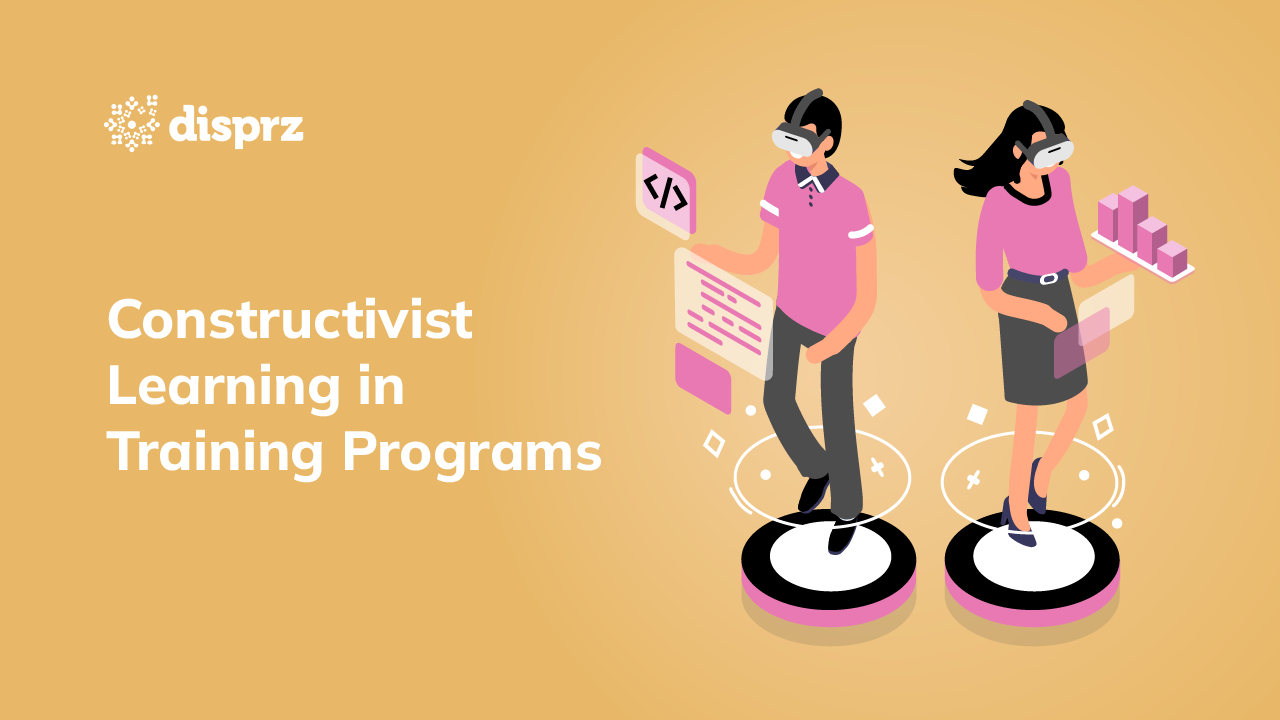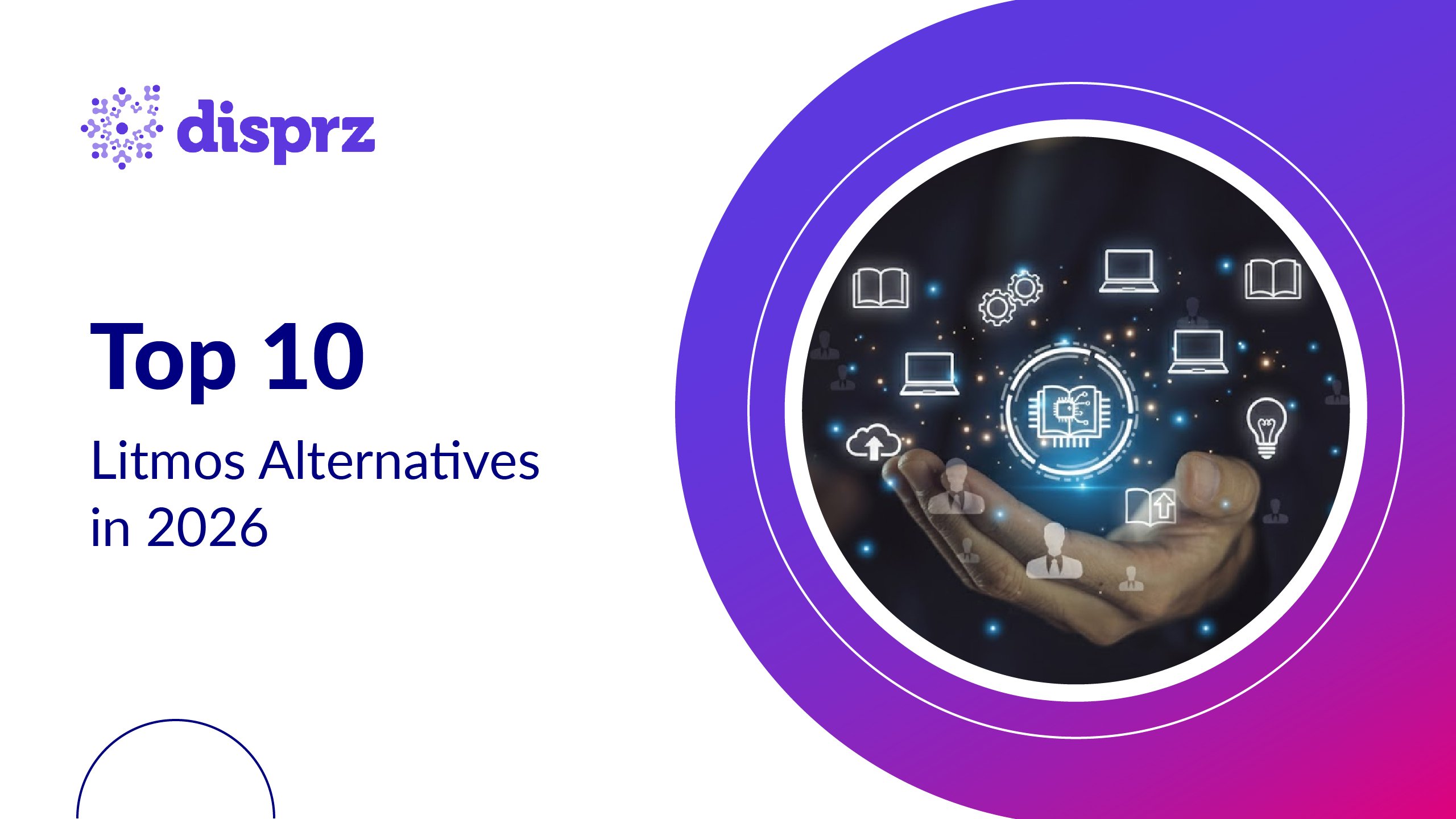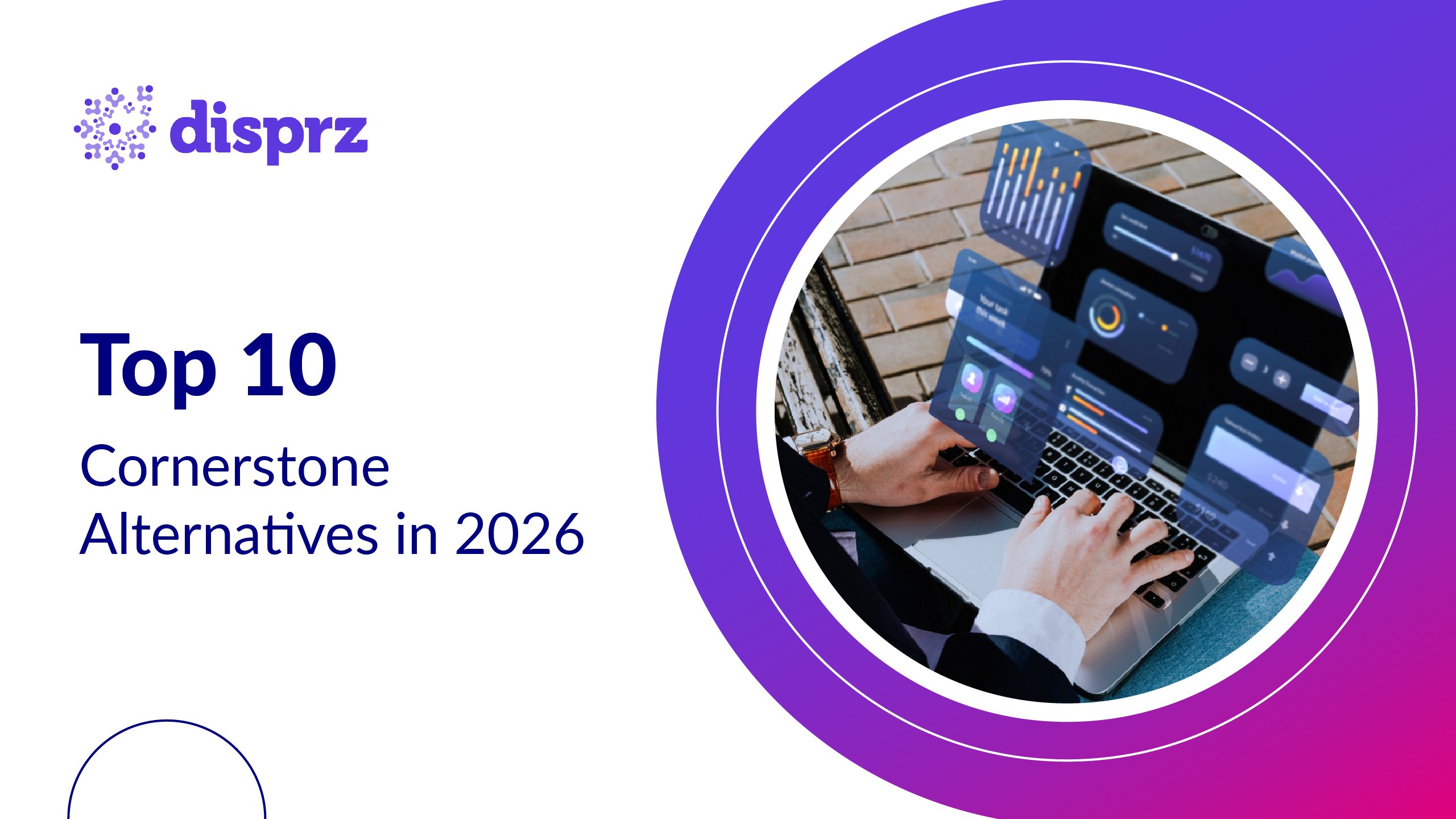What is Constructivist Learning Theory?
Constructivist learning theory suggests that individuals acquire knowledge by integrating new experiences with their existing knowledge. This happens in two ways: assimilation, where new information fits into existing frameworks, and accommodation, where those frameworks are adjusted or replaced to incorporate new insights. For example, imagine attending a cooking class with basic knowledge of spices.
When introduced to saffron, you might initially add it to your understanding of spices (assimilation). As you learn more about its distinct flavor and uses in various cuisines, you refine or expand your mental model to include its unique properties (accommodation). This dynamic process illustrates how learning reshapes and builds upon what we already know.
Principles of Constructivist Learning Theory for L&D
Constructivist learning theory emphasizes that learners construct knowledge through active engagement and real-world experiences. In the context of learning and development (L&D), this means fostering environments where employees can connect new knowledge with existing skills through hands-on practice, collaboration, and problem-solving. Personalized learning paths, reflective exercises, and opportunities for experimentation enable learners to internalize concepts more effectively, leading to deeper understanding and practical application in their roles.
|
Principles of Constructivist Learning Theory
|
Application in L&D
|
|
Active Learning |
One of the core principles of constructivist learning is that learners engage with the material through hands-on training, simulations, or practical exercises. |
|
Integration of Prior Knowledge |
In line with the principles of constructivist learning, this builds on existing knowledge, helping employees connect new skills to their roles and experiences. |
|
Social Interaction |
Fosters collaborative learning through group activities, discussions, and peer mentoring, allowing knowledge-sharing among peers. |
|
Contextual Relevance |
Provides real-world applications, making training relevant and practical, as employees connect skills to real work scenarios. |
|
Reflective Practice |
Encourages learners to reflect on training experiences, fostering deeper understanding and supporting continuous skill development. |
Benefits of Constructivist Learning in Corporate Training
Implementing active learning constructivism in corporate training offers several advantages:
-
Learners find the experience engaging as they connect new knowledge to their insights, enhancing retention and comprehension.
-
Immediate application of skills demonstrates the value of training, making learning more meaningful and relevant to their roles.
-
Emphasis is placed on critical thinking and comprehension, fostering skills that go beyond mere recall.
-
This approach nurtures interpersonal skills, encourages clear communication, and promotes learner independence.
How Constructivist Learning Works in Different Industries
Constructivist learning in corporate training flourishes across industries by adapting real-world contexts and task-driven learning to meet unique workplace needs.
Here's how:
Healthcare & Pharma
Through simulations and real case problem-solving, medical professionals apply new protocols to scenarios mirroring their work; boosting learning retention in corporate training and making the training stick under pressure.
Retail & FMCG
By embedding active learning in workplace settings (such as role-playing customer interactions or managing inventory) you foster immediate application and deeper understanding.
Manufacturing & Logistics
Constructivist training strategies such as hands-on machinery operation and team-led troubleshooting enable employees to build skills through doing, outperforming passive slide-based learning.
Technology & IT
Project-based sprints and collaborative design-thinking sessions capitalise on constructivist learning in corporate training. Learners constantly reflect, iterate, and connect new tools or concepts to what they already know.
Banking & Finance
Case studies and scenario-based modules immerse employees in context-rich environments; bridging theory and practice and greatly enhancing learning retention in corporate training.
In each sector, the emphasis shifts from rote instruction to experiential learning; highlighting how constructivist learning vs traditional learning can transform engagement, relevance, and outcomes.
Constructivist Learning vs Traditional Training Approaches
When exploring constructivist learning vs traditional learning, the differences become clear in how knowledge is delivered, absorbed, and applied. Traditional models focus on information transfer, while constructivist approaches emphasise context, relevance, and active learning in workplace settings.
|
Aspect |
Traditional Training |
Constructivist Learning |
|
Learner’s Role |
Passive recipient |
Active participant |
|
Learning Format |
One-way lecture or slide deck |
Collaborative, problem-based experiences |
|
Motivation & Engagement |
Relies on extrinsic triggers |
Builds intrinsic engagement through relevance and autonomy |
|
Application |
Often decoupled from real work |
Immediately relevant and contextual |
|
Knowledge Retention |
Prone to quick forgetfulness |
Higher learning retention in corporate training |
|
Adaptability |
Rigid, one-size-fits-all |
Flexible, adaptable to diverse learner needs |
Key Highlights:
-
Active learning in workplace settings encourages learners to take ownership rather than just absorb content.
-
With constructivist training strategies, employees build new frameworks atop their existing knowledge, improving not just comprehension but long-term retention.
-
Traditional approaches may yield faster roll-out, yet often falter in engagement and retention. In contrast, constructivist methods (though more resource-intensive) drive meaningful change and real-world readiness.
This comparison underscores why many L&D teams now favour constructivist learning in corporate training for sustainable impact, despite the higher upfront effort and potential training adoption challenges.
Examples of Constructivist Learning in the Workplace
Incorporating constructivism in workplace upskilling enables employees to enhance their existing knowledge through real-world experiences, in line with cognitive constructivism principles. Methods such as mentorship, project-based learning, interactive simulations, and self-directed modules foster engaging and practical learning environments. Here are the constructivist learning theory examples:
Mentorship Programs
New employees are paired with experienced mentors, where learning happens through real-world problem-solving and shared experiences, demonstrating cognitive constructivism by building on existing knowledge with new, practical insights.
Project-Based Learning
Employees work on relevant projects, applying new skills immediately within a team context. This method supports constructivism in upskilling by enabling knowledge construction through collaboration and hands-on experience.
Interactive Simulations
Training simulations allow employees to practice scenarios that mirror real challenges. This approach promotes cognitive constructivism by helping them test hypotheses, learn from mistakes, and adapt skills in a safe environment.
Self-Directed Learning Modules
Learners choose topics that align with their roles, promoting autonomy and personal relevance. This method reflects constructivism in upskilling by allowing employees to direct their growth and build on what they already know.
Steps to Implement Constructivist Learning in Employee Training
Implementing active learning constructivism in employee training enhances engagement and collaboration by building on existing knowledge. By assessing prior skills, defining objectives, and designing interactive activities, organizations foster critical thinking and practical application.

Assess Prior Knowledge
Begin by evaluating employees' existing skills and knowledge. Understanding their starting point helps tailor training to build on their foundation, essential in active learning constructivism.
Define Learning Objectives
Clearly outline the goals of the training program. Objectives should focus on the desired outcomes and competencies that employees should achieve through the learning process.
Design Engaging Activities
Create hands-on, interactive learning experiences that encourage collaboration and critical thinking. Incorporate activities such as group discussions, role-playing, and problem-solving exercises to foster engagement and promote active learning constructivism.
Encourage Reflection
Integrate opportunities for learners to reflect on their experiences and the new knowledge acquired. Reflection helps deepen understanding and allows employees to make connections between theory and practice.
Facilitate Social Interaction
Promote collaboration among employees through team projects, peer feedback, and discussions. This social aspect aligns with the principles of active learning constructivism, enhancing communication and teamwork skills.
Provide Real-World Applications
Ensure that training is relevant by connecting it to real workplace scenarios. Practical applications help employees see the importance of what they are learning and encourage them to apply new skills immediately.
Gather Feedback and Iterate
After training sessions, collect feedback from participants to assess effectiveness and areas for improvement. Use this information to refine future training programs, ensuring they meet employee needs and learning objectives.
Challenges of Implementing Constructivist Learning in L&D
Implementing constructivist learning in L&D presents several challenges:

Resistance to Change
Employees and management may be accustomed to traditional training methods, leading to reluctance to adopt new, interactive approaches that require more active participation.
Resource Intensity
Constructivist methods often demand significant time, effort, and resources to design engaging, hands-on learning experiences, which can be a challenge for organizations with limited budgets or staff.
Assessment Difficulties
Evaluating learning outcomes in a constructivist framework can be complex, as traditional assessment methods may not effectively measure the understanding and application of knowledge gained through experiential learning.
Facilitator Training
L&D professionals must be adequately trained to implement constructivist approaches, requiring investment in their development to ensure they can effectively guide and support learners.
Diverse Learning Styles
Employees have varying preferences and learning styles, making it challenging to design training that resonates with everyone while maintaining the principles of constructivism.
Scalability Issues
Scaling constructivist learning programs to accommodate large groups can be difficult, as many methods are inherently more effective in smaller, more intimate settings where individual interaction is possible.
How Constructivist Learning Helps Build Future-Ready Workforces
Constructivist learning plays a crucial role in building future-ready workforces by fostering key skills and competencies essential for adapting to a rapidly changing work environment.
Here’s how it contributes:
Enhanced Critical Thinking
Constructivist approaches encourage employees to engage in problem-solving and analytical thinking, equipping them with the ability to tackle complex challenges and make informed decisions.
Collaboration and Teamwork
By promoting social interaction and group activities, constructivist learning fosters collaboration skills. Employees learn to work effectively in teams, which is vital in today’s interconnected workspaces.
Adaptability
Constructivist learning emphasizes real-world applications and reflective practices, helping employees become more flexible and responsive to change. They learn to navigate uncertainty and adjust their strategies as needed.
Application of Knowledge
Constructivist learning connects theory to practice, enabling employees to apply what they learn in real-world situations. This hands-on experience helps them retain information and understand its relevance to their roles.
Creativity and Innovation
Encouraging experimentation and exploration, constructivist learning cultivates a creative mindset. Employees become more willing to try new ideas and approaches, driving innovation within the organization.
Conclusion: Way Forward with Constructivist Learning in L&D
The way forward with constructivist learning in L&D lies in fostering a culture of active engagement and real-world application. Organizations should invest in facilitator training and scalable programs that encourage collaboration and critical thinking. By embracing technology to enhance interactivity, organizations can effectively overcome challenges associated with implementation. Ultimately, adopting constructivist approaches will empower employees and drive sustained growth and innovation in a rapidly changing business environment.
FAQs
1) How does constructivist learning improve employee engagement?
Constructivist learning enhances engagement by transforming learners from passive recipients to active co-creators. Through hands-on activities, peer collaboration, and problem-solving grounded in their own context, employees feel directly involved and invested in their growth journey. This ownership drives motivation and dramatically improves learning retention in corporate training.
2) Is constructivist learning suitable for frontline workers?
Absolutely. For frontline workers (such as retail associates, operators, or customer service teams) constructivist learning enables active learning in workplace contexts such as simulations, role plays, and on-the-job projects. These constructivist training strategies embed training into daily tasks, promoting quicker adoption, relevance, and retention; making it highly effective even for non-office-based roles.
3) What are the three types of constructivism theory?
As outlined by trusted resources such as Learning Everest, the three recognized types are:
-
Cognitive Constructivism: Focuses on how individuals personally integrate new knowledge with existing mental models.
-
Social Constructivism: Emphasizes learning through social interaction, dialogue, and shared experiences.
-
Radical Constructivism: Argues that knowledge is entirely constructed by the individual; there is no single, objective reality.








